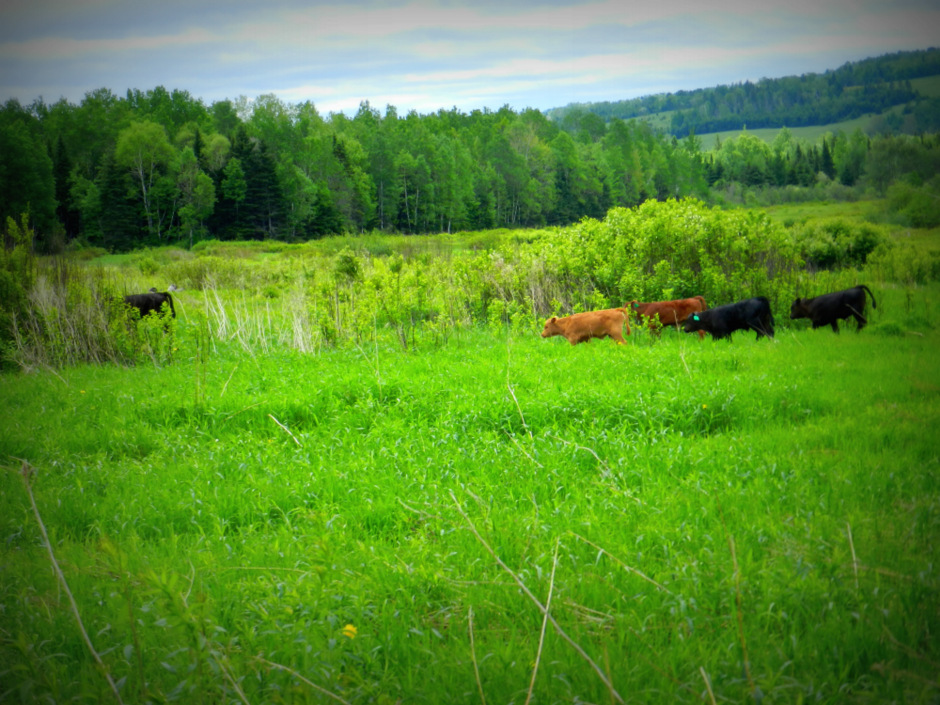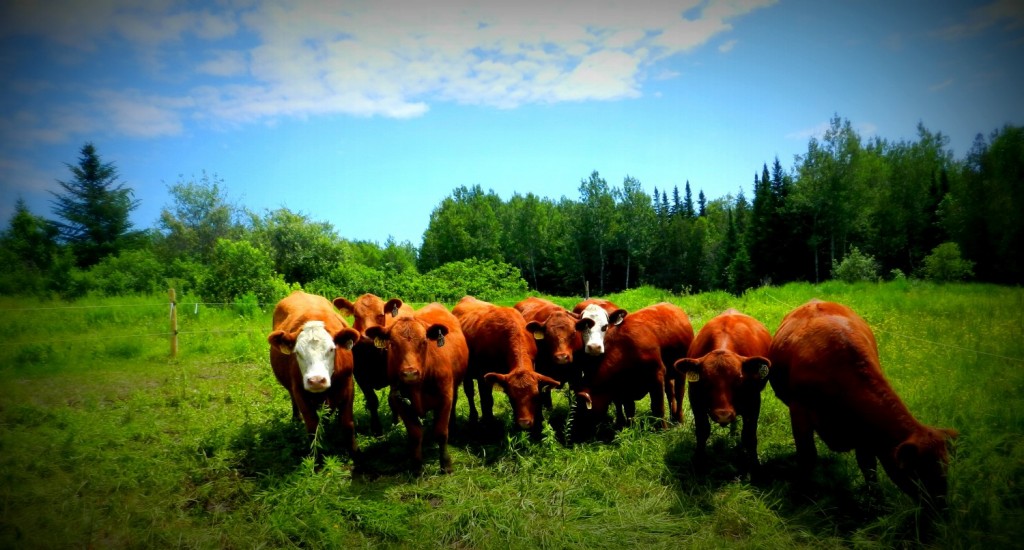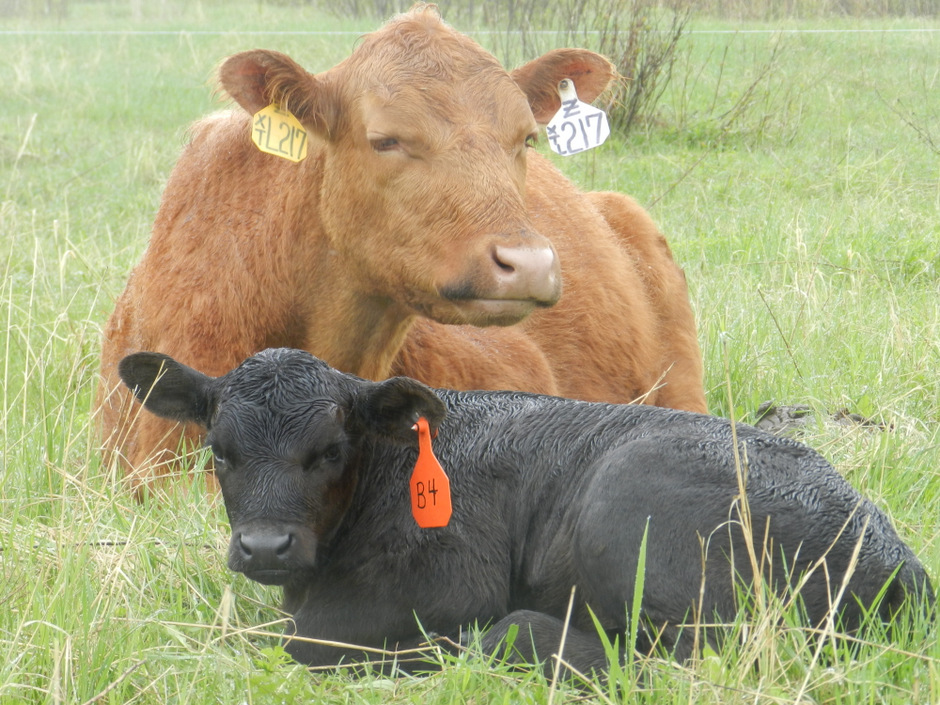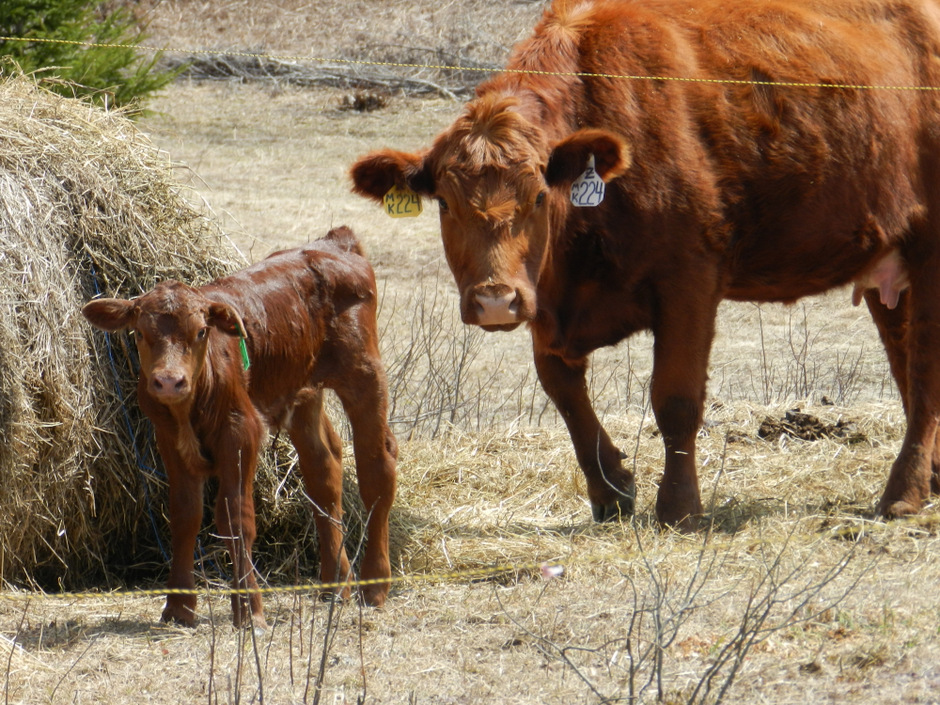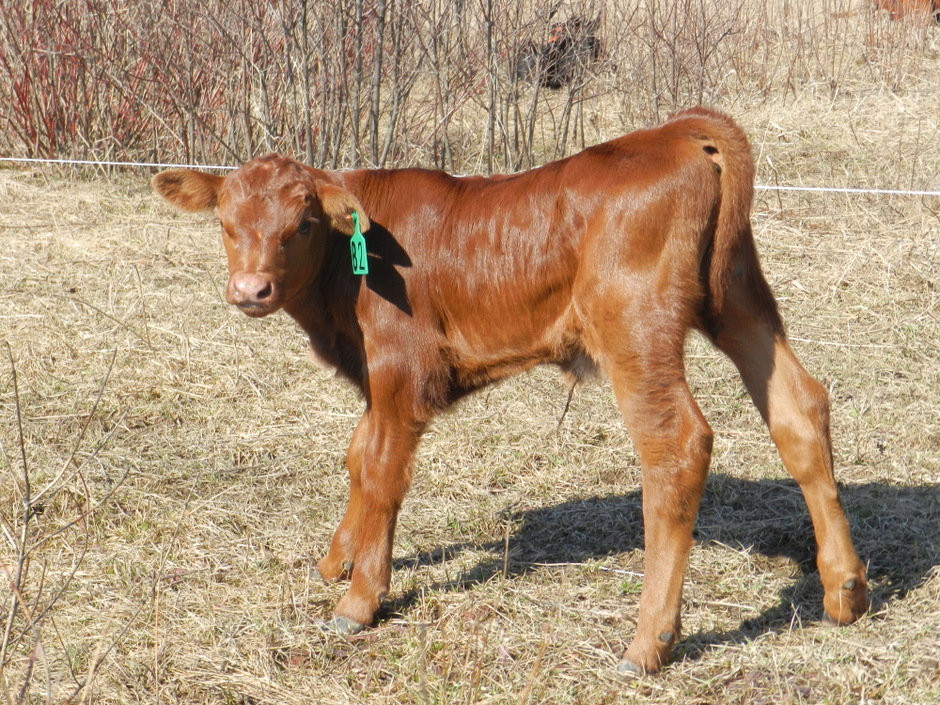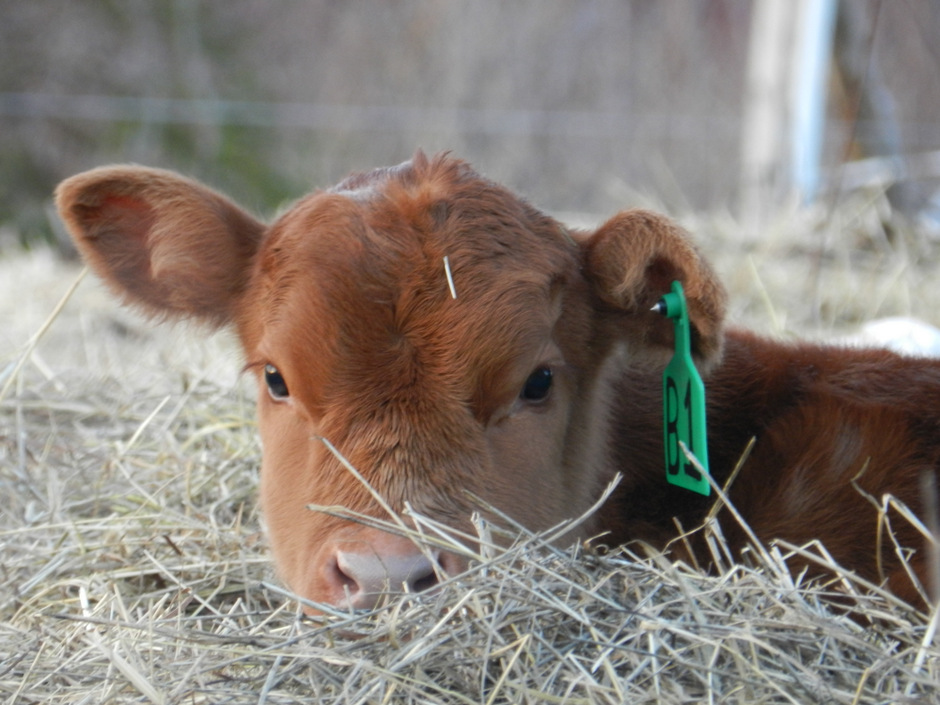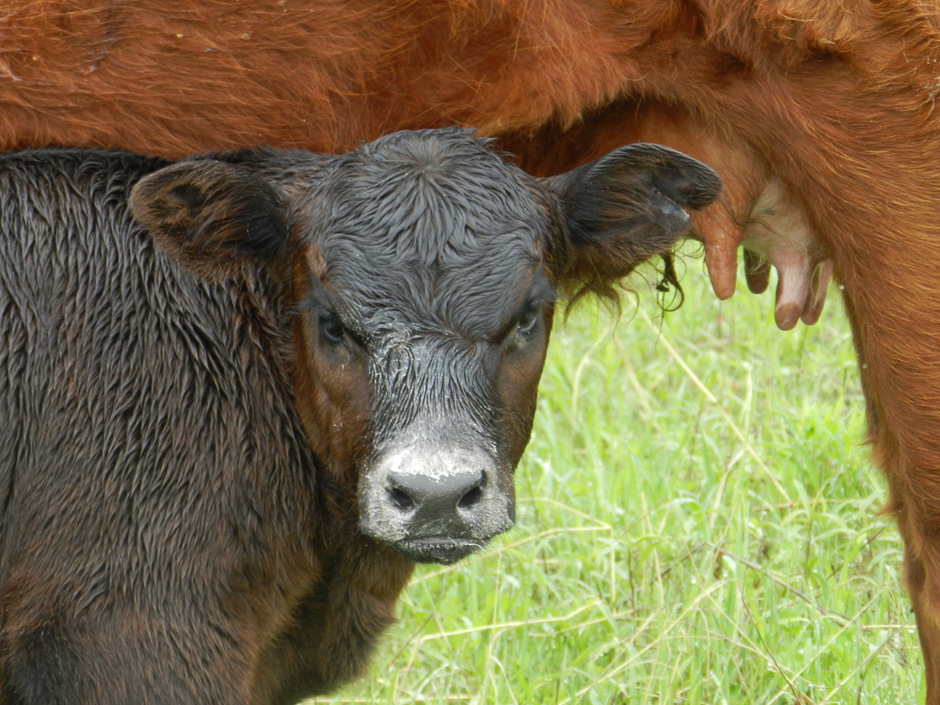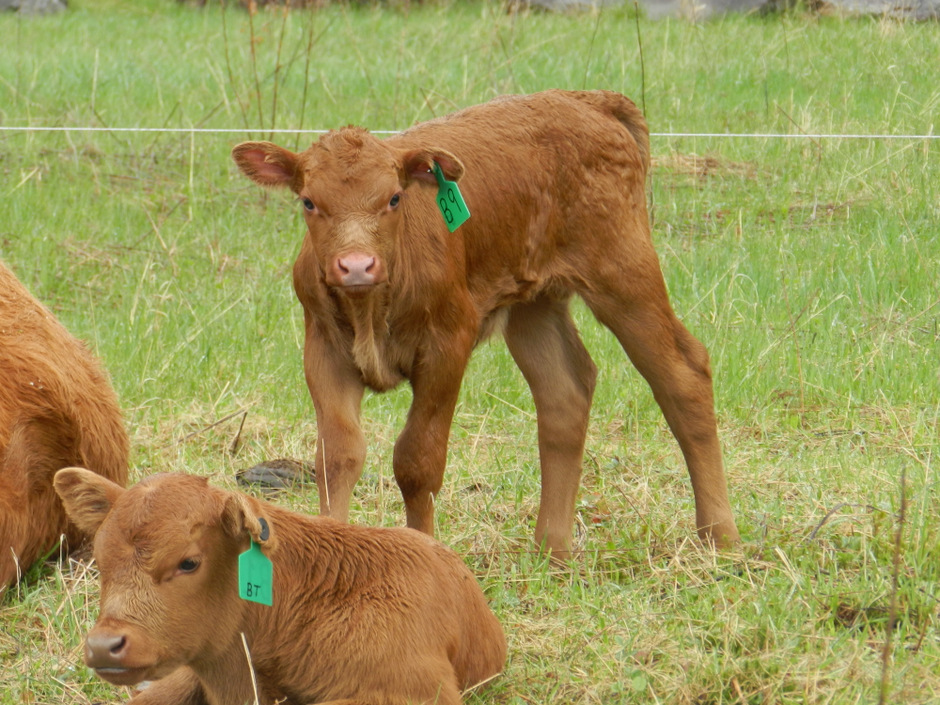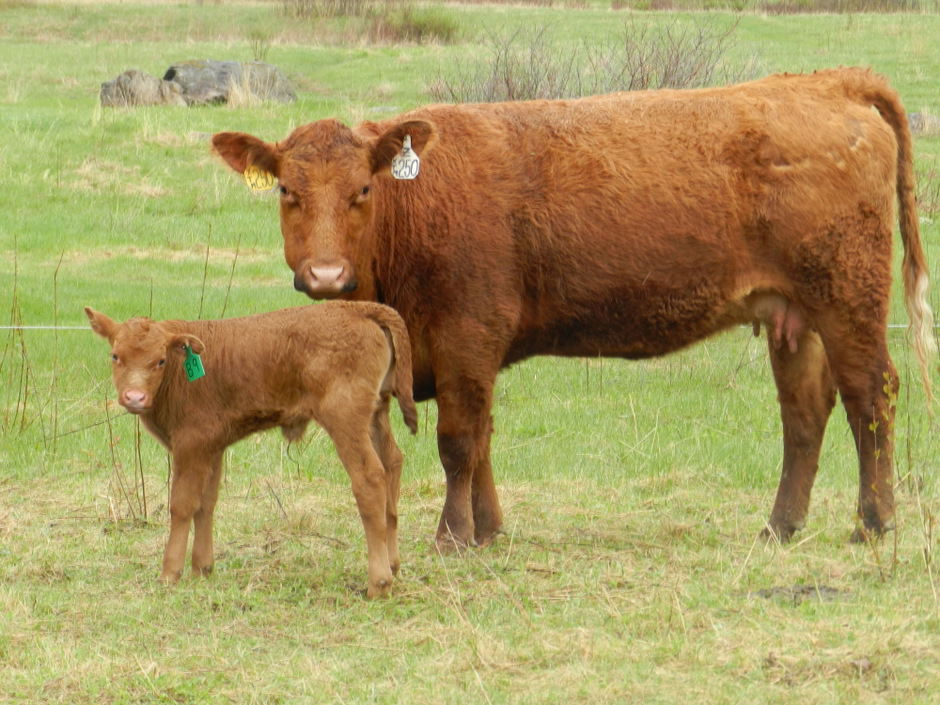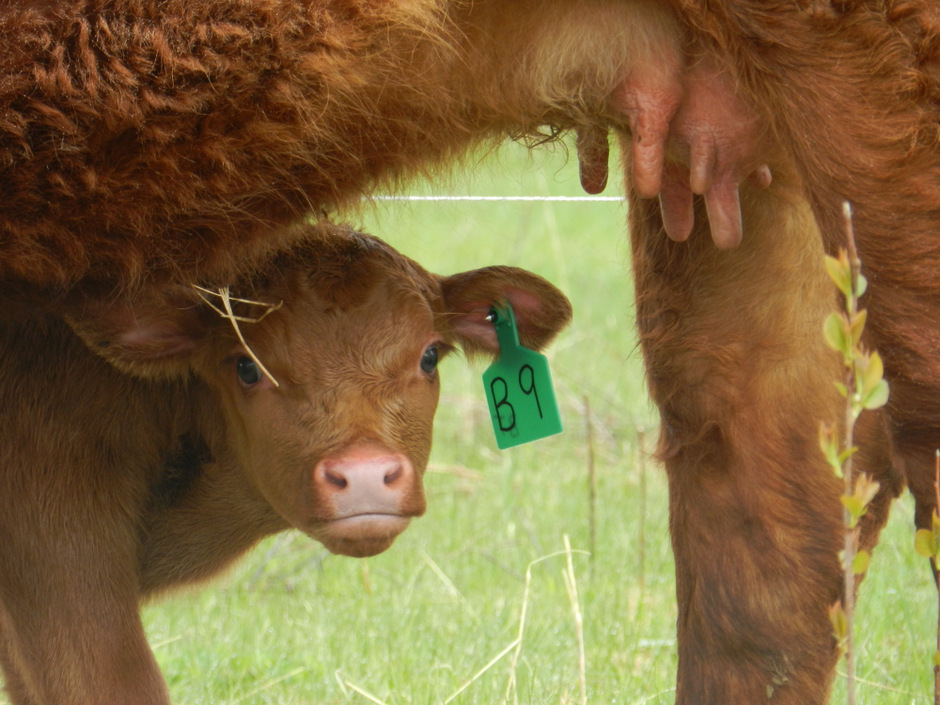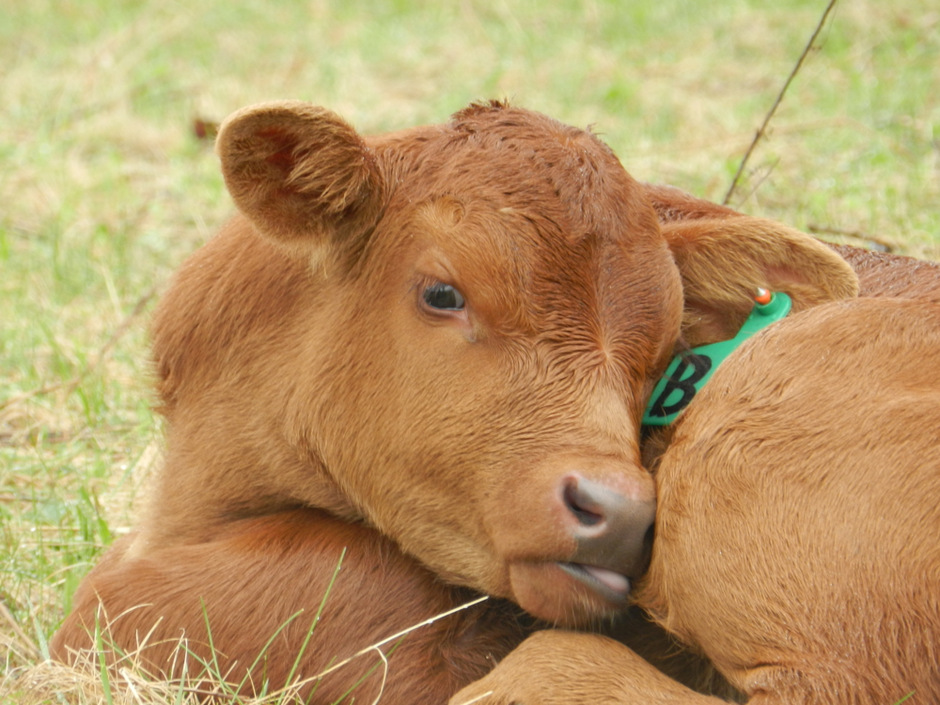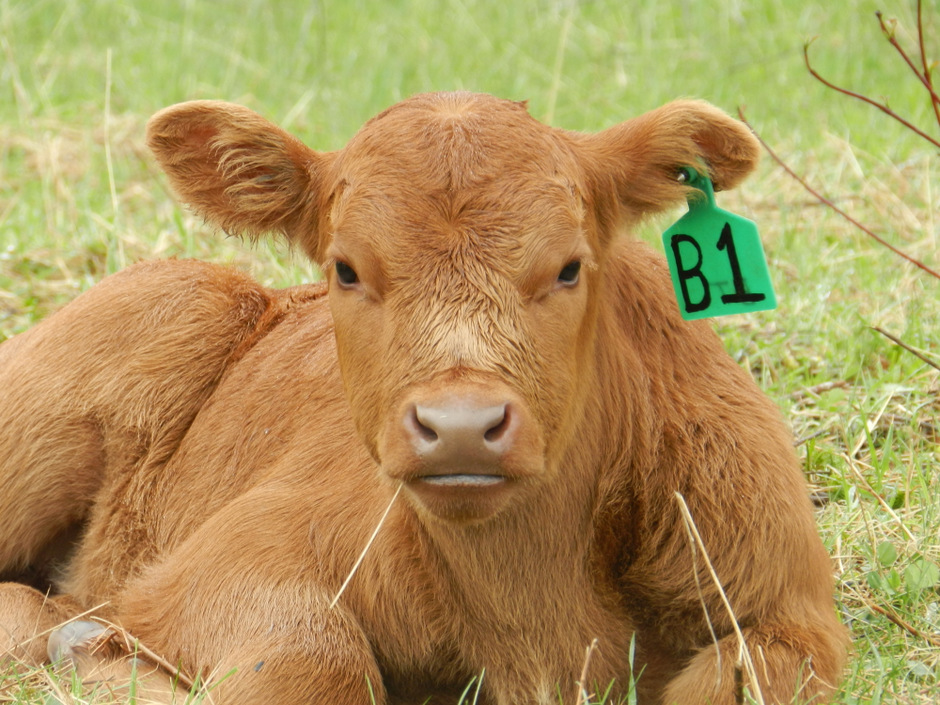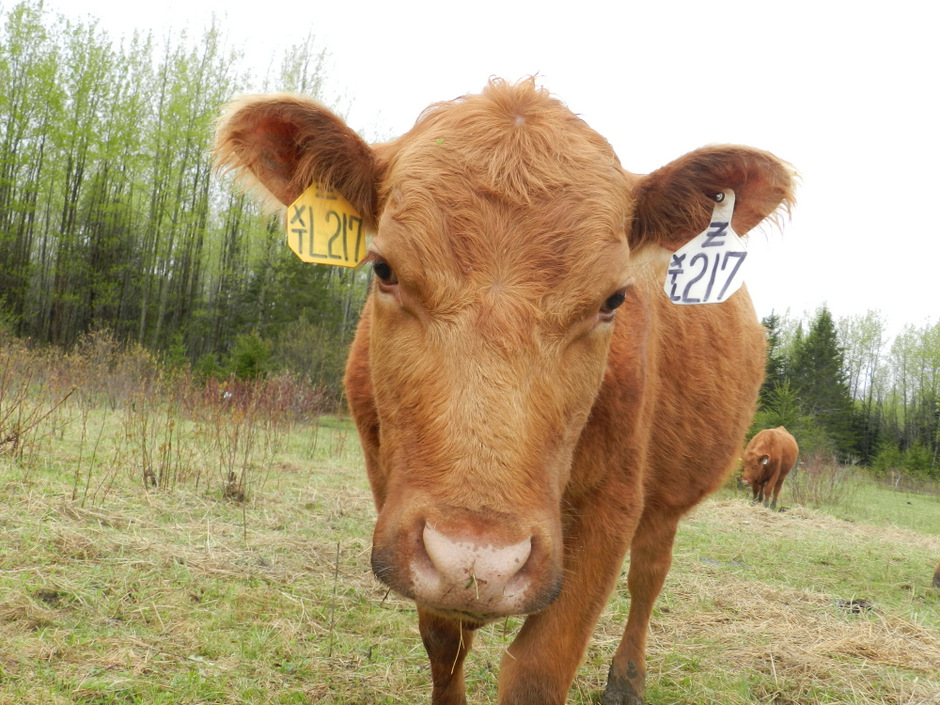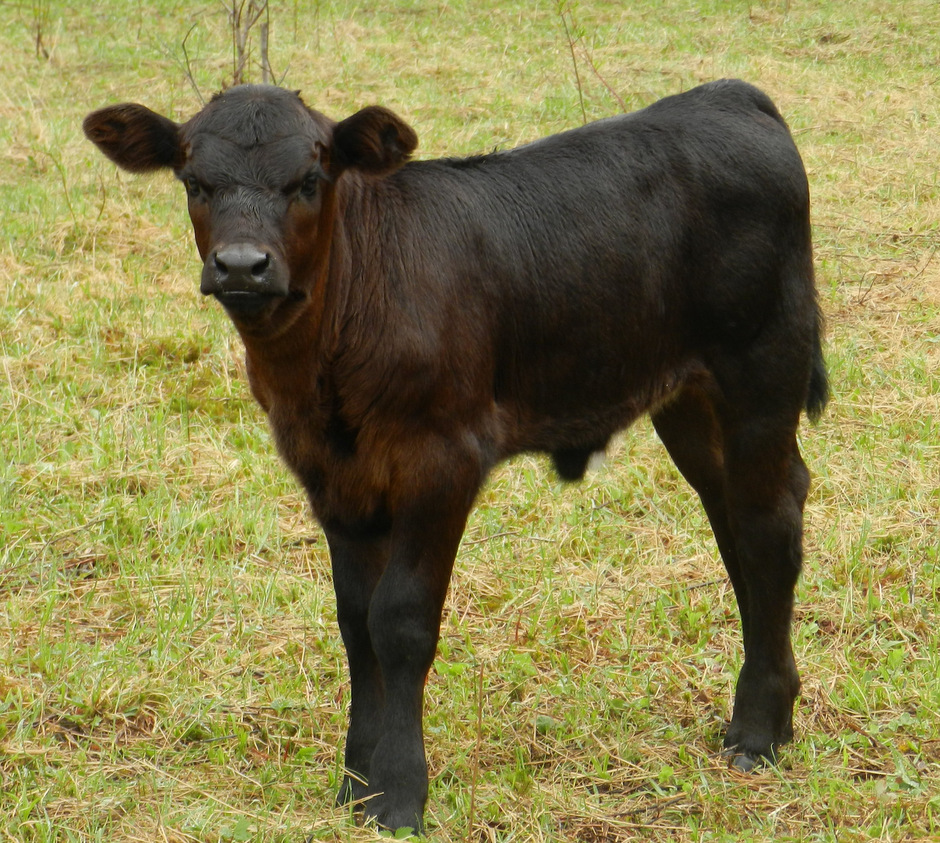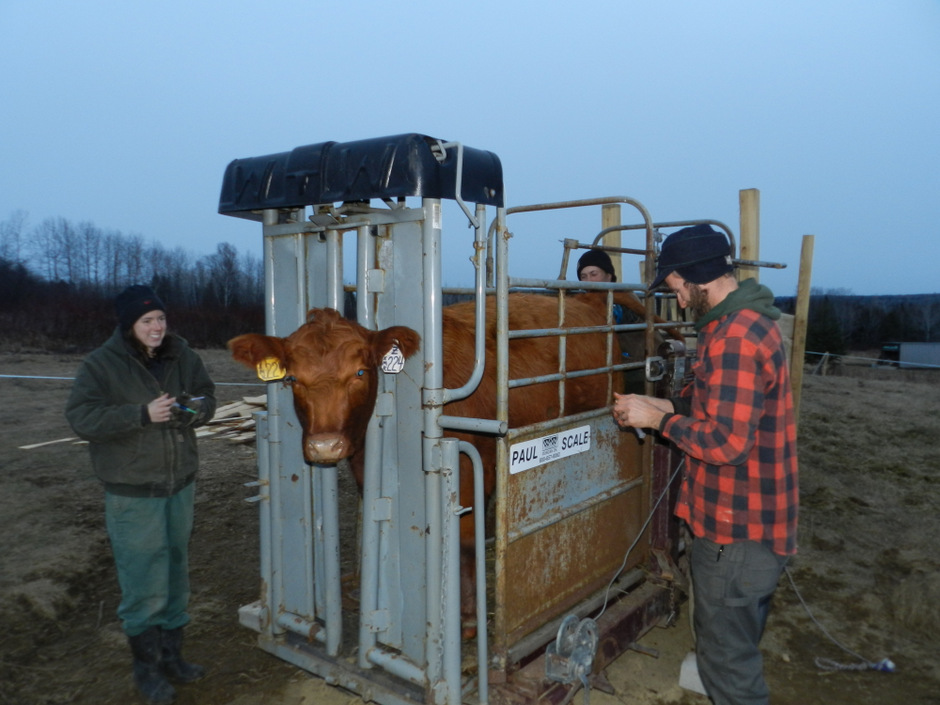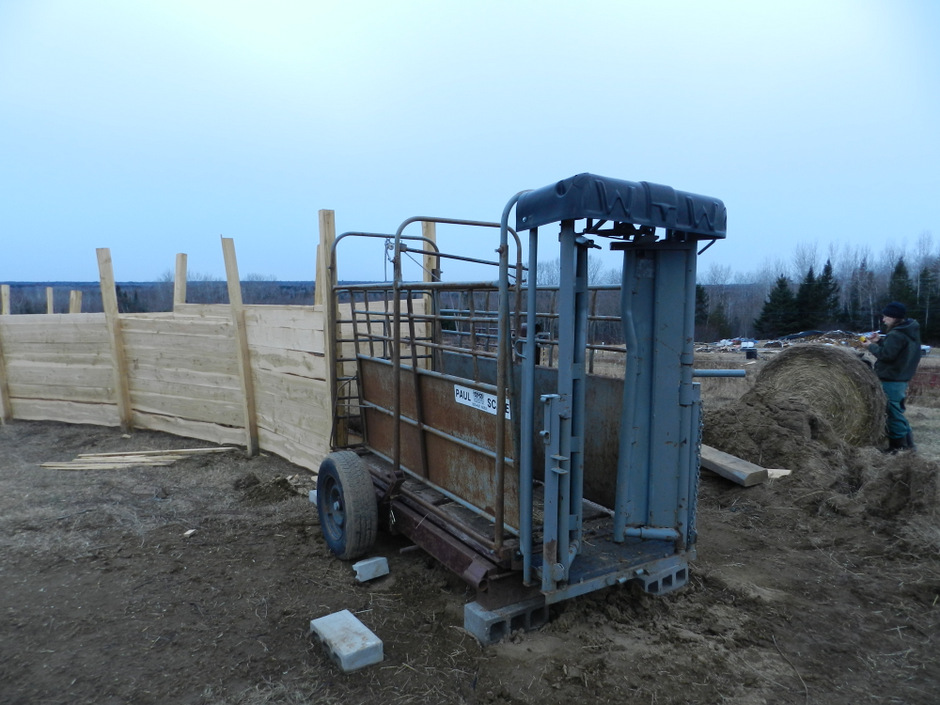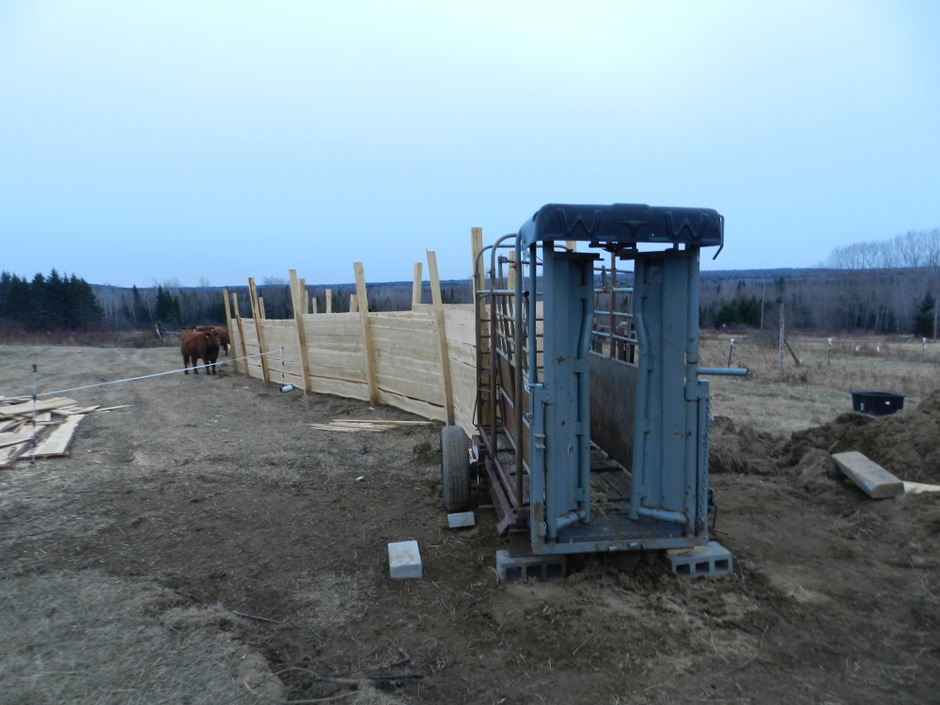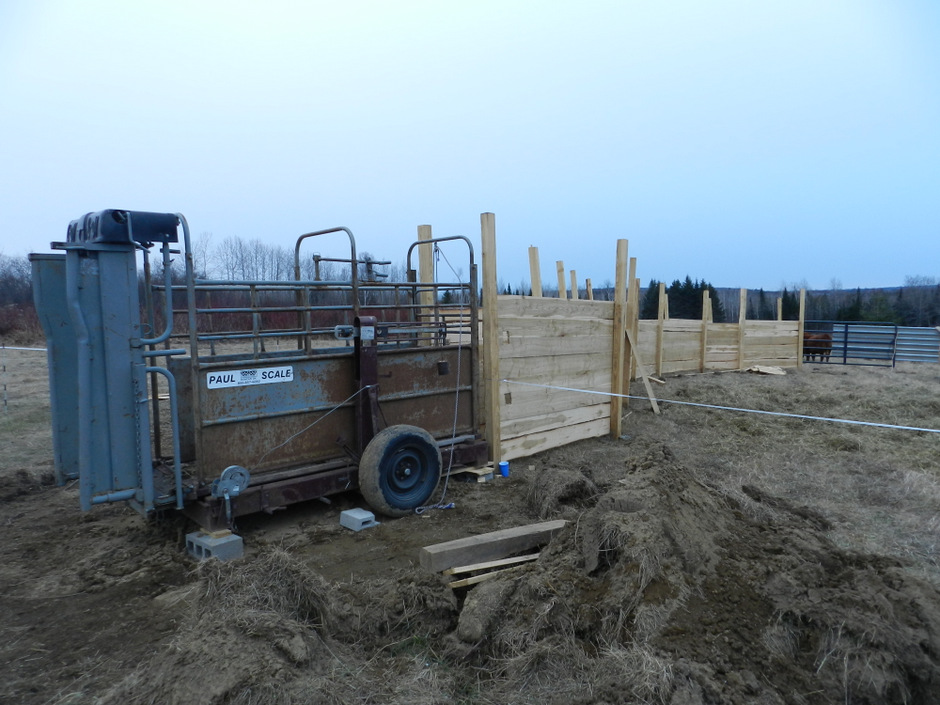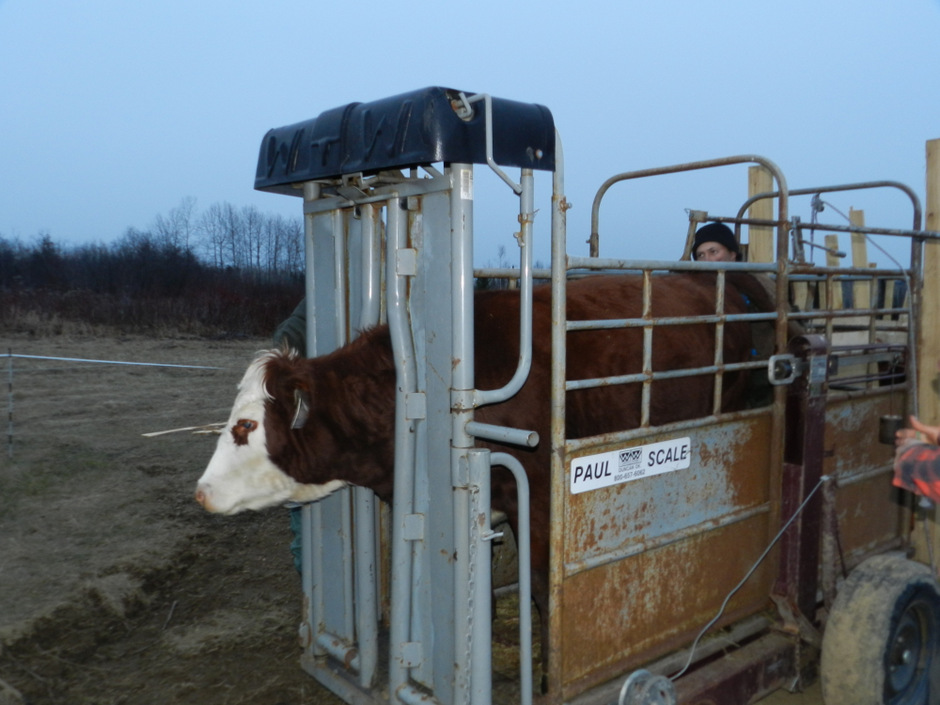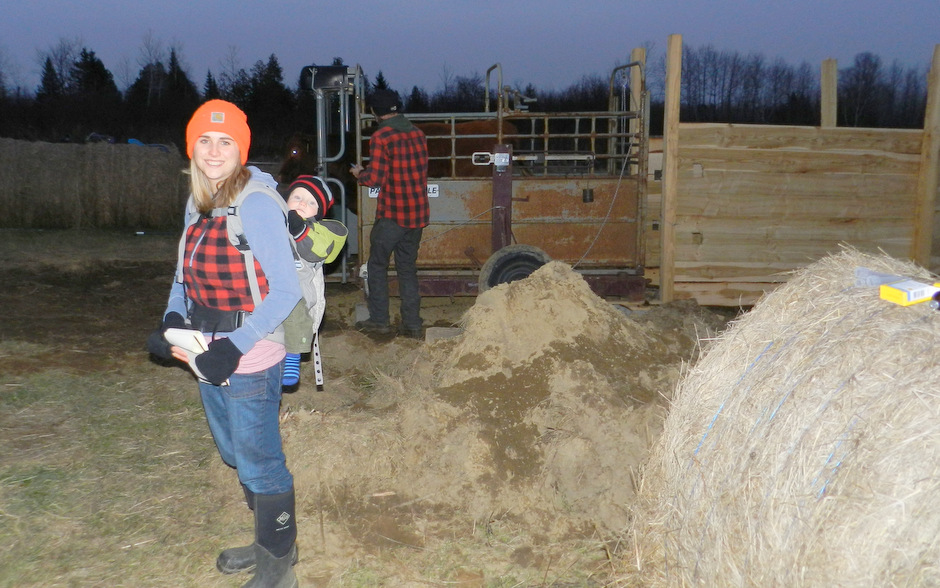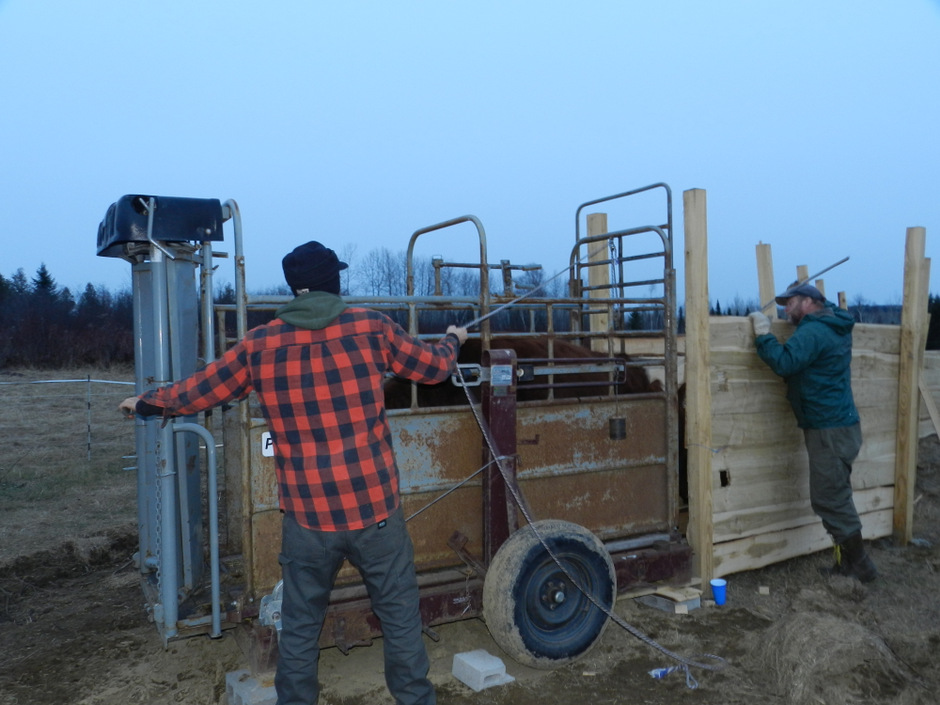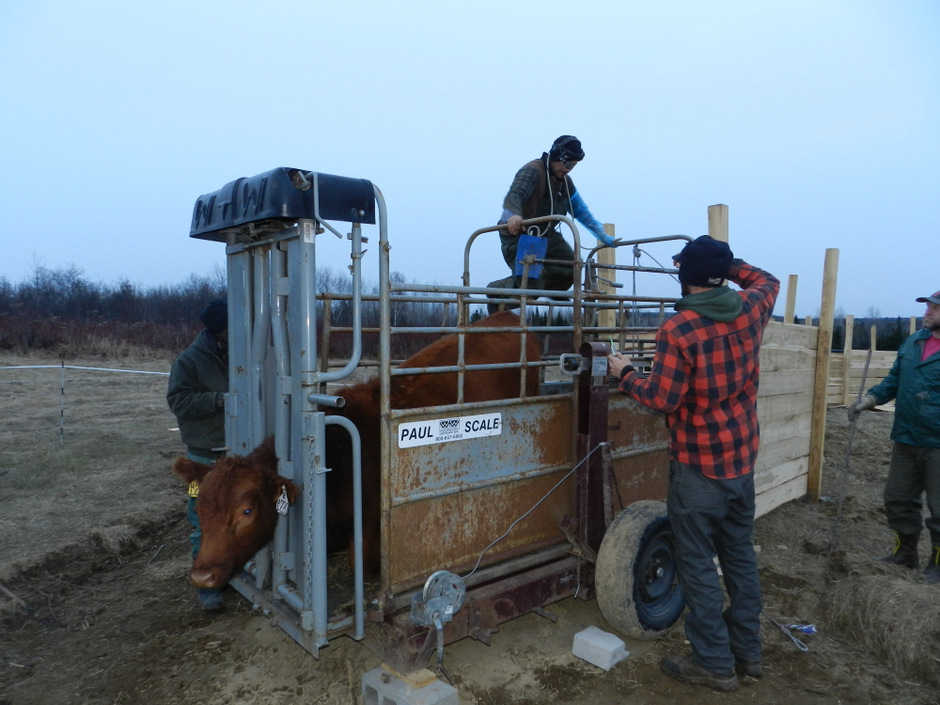
In a previous post, we discussed pregnancy checking our 10 heifers and discovering that we were 10 for 10. All 10 of our heifers were pregnant.

At that time we were in mid-November and winter was getting a slow start in northern Maine. I mean a real slow start: We were still grazing! No winter hay had been consumed on our farm yet.

Early-November 2013.
Our hay bale grazing sites were patiently waiting….
Mother Nature may have gotten a late start in our neck of the woods but in the end, she more than made up for her slow start and when we thought we had seen the last of her, she popped in for a surprise visit, just in time for the start of calving season.
This would be our first winter with cattle on the farm and we were a bit anxious of all the what if’s and unknowns that come along with overwintering livestock in snowy, cold regions. To our way of thinking, we had three primary components of animal welfare to consider and manage for during the winter: 1) Animal Health, 2) Nutrition, and 3) Shelter/Cover and Pasture Safety. We wanted to manage our herd in such a way that would lead our heifers into their calving season strong and healthy and in the best body condition possible.
Animal Health
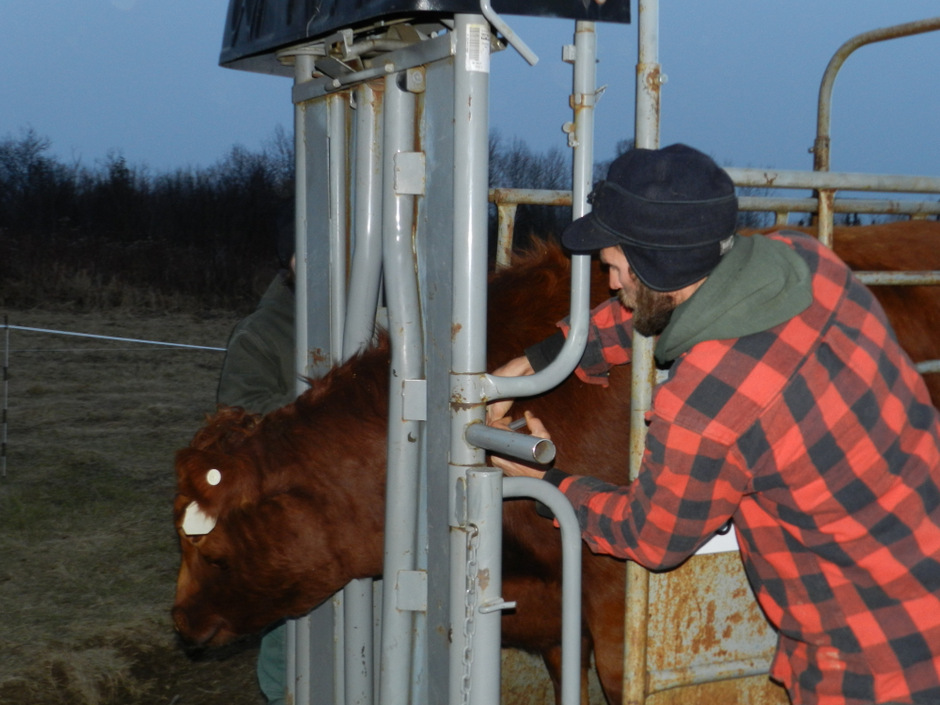
All 10 heifers received the following three vaccinations during their pregnancy check: 1) Decotmax for parasites, 2) MultiMin90 as a mineral supplement, and 3) Bovi-Shield Gold 5 for a range of respiratory diseases.
Having a consistent vaccination schedule, with the appropriate vaccinations for the needs and requirements of your herd, is critical for your animals’ health. Furthermore, when dealing with pregnant cattle, keeping current on shots is important for the welfare of the mother cow and her unborn calf. Vaccinations, while important, are no replacement for good animal husbandry, though. It was our responsibility to ensure that our heifers received the care needed to sustain a harsh, northern Maine winter.

April 2014
To assess our heifers’ health and condition on a daily basis, we continued with our twice-daily herd checks over the winter months. Whenever we approached the herd, it was an automatic act for us to immediately get a head count of the herd.
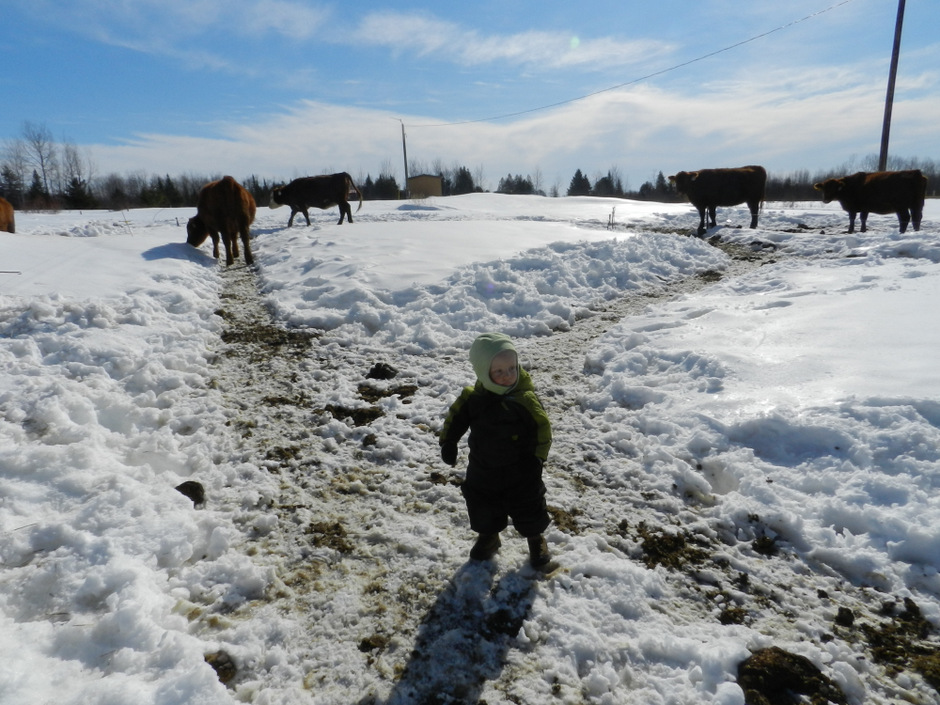
April 1, 2014
Once everyone was accounted for, we would check on each heifer individually. Since our heifers were pregnant, we were paying special attention to any signs of a miscarriage, such as bleeding.

At one point during the winter, we noticed that our herd was having a major lice problem. So, we applied a pour-on delouser to each heifer. This is something we may not have noticed if not for our herd checks.
Nutrition
On our farm, we strive to maintain a grass/roughage-only diet with mineral supplements and when needed, protein such as barley. Therefore, throughout the winter, our heifers had access to hay and a mineral supplement high in copper and selenium, which our soils in northern Maine are deficient in. Prior to hay feeding in the fall, we provided 1-2 lbs/head/day of barley to supplement the lower quality grass that our cattle were feeding on in late fall.
By providing our pregnant heifers with a consistent supply of high-quality hay and mineral throughout the winter, we hoped for them to be in the best possible condition coming out of winter. Springtime would bring calving and shortly thereafter, another breeding season. We wanted our heifers to be strong and healthy, with the endurance required to handle labor and delivery, the summer breeding season and hopefully, another pregnancy while still providing milk for their calves.
Springtime would also bring green grass and a return to our rotational pasture grazing; it is at this time that we expect to see an increased rate of gain as compared to the winter months. The amount of food consumed during the winter months tends to slow down, with animals displaying compensatory gain in the springtime when on pasture. They are eating to make up for any losses they incurred, weight wise, during the winter.
Shelter/Cover and Pasture Safety

Through the course of the winter, our heifers hay bale grazed in three separate sections on our farm. In each of these three sections, they had access to hay, water (mainly in the form of snow), mineral and shelter.

Note blue mineral barrel at the base of the tree.
Our mineral barrel set-up has changed to an upright system.
Since we currently do not having any housing for animals on our farm, our heifers sought cover/shelter during inclement weather in wooded areas (e.g., fir, spruce, cedar, dogwood, alder, birch, aspen and willow stands).
As we did during the grazing season, we continued with our pasture and fence checks. We repaired fence as needed and checked for any dangerous objects and removed them.

In particular, we wanted to remove any objects that the heifers could get tangled up in such as twine and string from the bales and tarps and the tarps themselves.

In addition, we had daily maintenance with our hay bales, and shoveling snow and chipping away at ice was an almost daily task.
To help organize our thoughts and observations during the winter months, we continued with our note-taking and record keeping for both the cattle (health, nutrition, etc) and the property (fence damage, snow level, temperatures, etc).
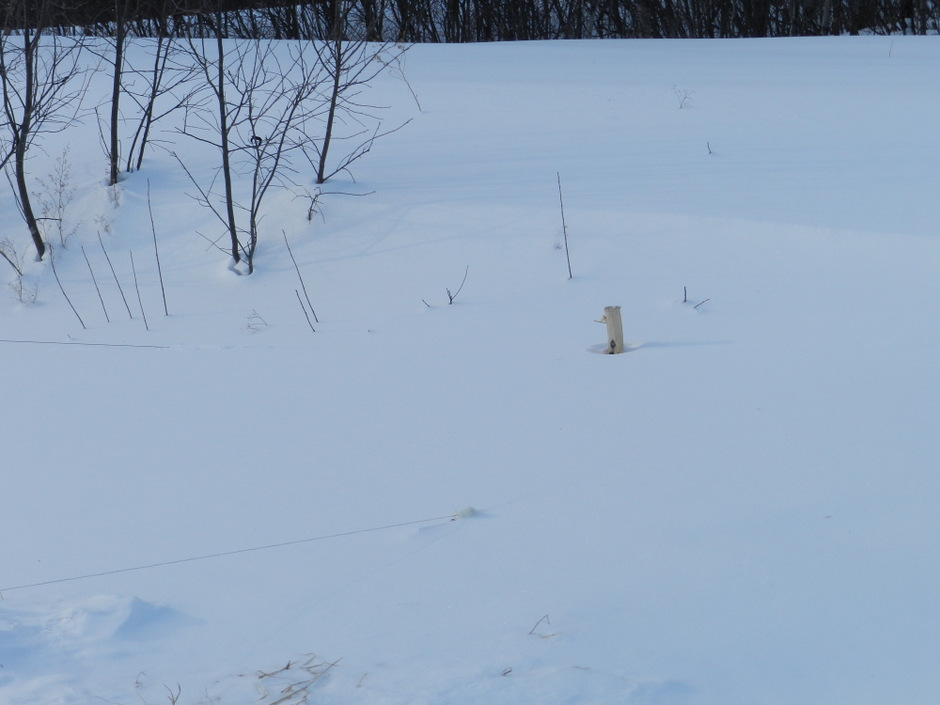
We made notes when the fence line disappeared under the snow pack, when the voltage on the electric fence plummeted with high snow pack and so on.
It takes work to tend to a cattle herd – no matter the size – during the winter months and when your winter season lasts half your year, the daily grind can become pretty monotonous and tiring.
On days when the wind was blowing and the snow was piled high, I would remind myself, as I was trudging my way to the herd, that I signed up for the whole kit and kaboodle when I became a cattle owner. Not just the sunny and warm days. It is not supposed to be easy.
That doesn’t mean we don’t enjoy what we are doing. You have to love this way of life – hard knocks and all. Jeremiah and I embrace that this way of life is hard. Life as a cattle owner will stretch your limits, your pockets and your patience beyond what you thought you could ever handle. It will break some and make others. We hope to be in the latter category. 🙂
It certainly was one long snowy winter here on the Wood Farm but that all seems like a distant memory when we look out the window at a sea of green grass and a healthy crop of young calves frolicking in the pasture!

